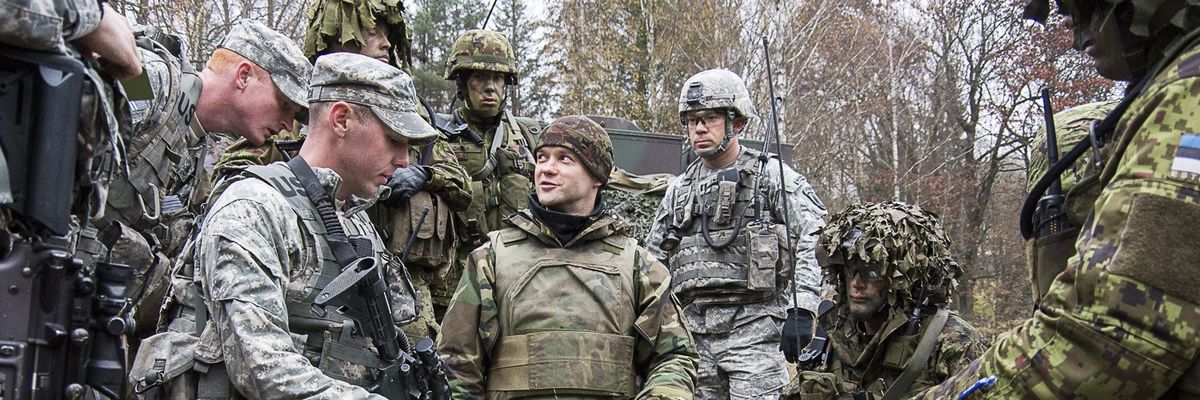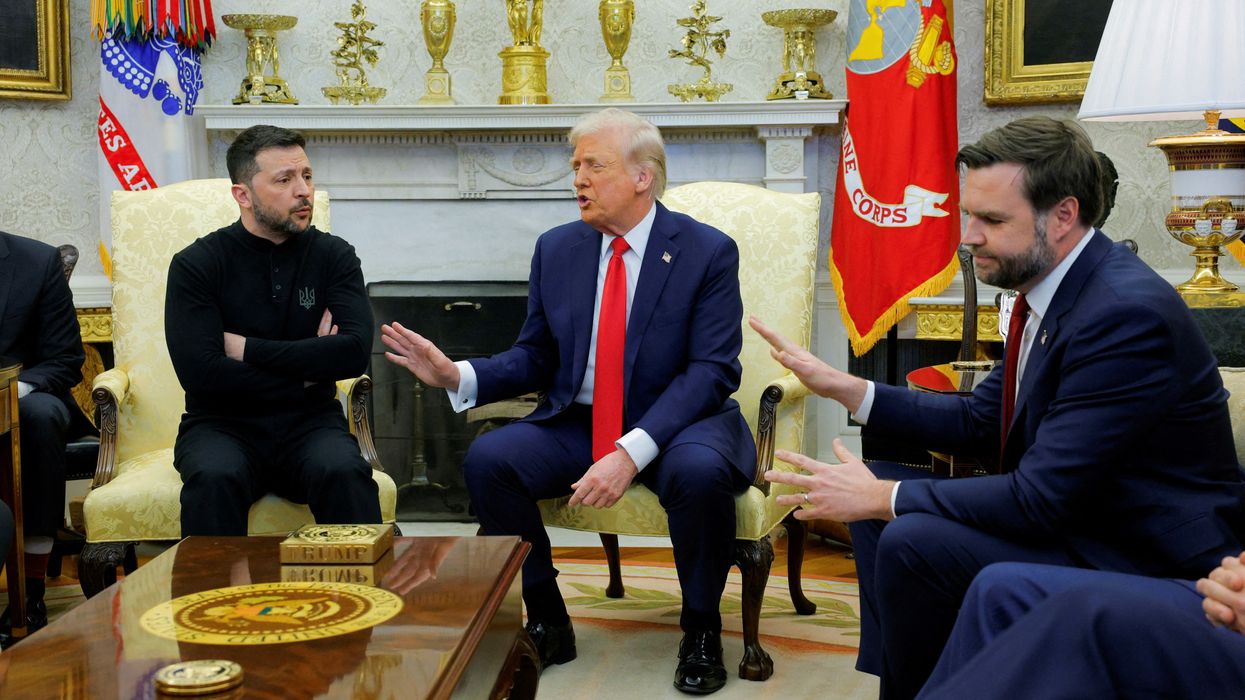The “Sustaining Deterrence in Europe” amendment inserted with bipartisan support into the Defense Authorization Act 2022, represents the very worst of congressional intervention in foreign and security policy.
The key passage of the amendment, which was introduced by Rep Mike Rogers (R-Ala.), ranking member of the House Armed Services Committee, reads as follows:
“The [House Armed Services] Committee directs the Secretary of Defense, in consultation with the service secretaries, to submit a report to the congressional defense committees not later than March 15, 2022, on the Department’s strategy for enhancing the United States forward presence on NATO’s eastern periphery, to include assessments of possibilities for potential force structure enhancements at a minimum in Romania, Poland, and the Baltic states, along with options for enhanced deterrent posture in Ukraine.”
The amendment is justified, according to supporters, by the need for deterrence against “Russian aggression on NATO’s eastern flank.” This embodies a willful confusion of interests, with Ukraine on the one hand, and existing NATO members on the other. In Ukraine, a frozen separatist conflict with Russian involvement is indeed ongoing, together with the territorial dispute over Crimea. These are, however, the kind of issues all too typical in the aftermath of the fall of empires. They stem from the twin issues of minority rights and historically disputed borders (Crimea was part of the Russian Republic until it was transferred to Ukraine by Soviet decree in 1954).
No politician or member of the U.S. foreign and security establishment has ever even attempted to explain why Russian involvement in Ukraine — with its territorial issues, its huge Russian minority, and deep historic, cultural, and emotional ties to one another — somehow implies Moscow’s desire to attack Poland or Romania, which contain no Russian minorities or territorial disputes. The justification for this belief in the Washington establishment is instead based on little more than memories of the 1940s, together with an assumption of innate, blind Russian tendencies to aggression.
Moreover, as far as Ukraine itself is concerned, the suggestion of a resemblance between U.S. “deterrence” there and deterrence in Poland and Romania is based on a very dangerous misconception. Romania, Poland, and the Baltic States are NATO members, covered by the Article 5 guarantee in the NATO Treaty whereby the United State is legally obliged to fight for them if they are attacked.
Ukraine is not a NATO member, and even if a U.S. administration were willing to make an immediate offer of membership, this would certainly be blocked by the other European NATO partners. The United States is not therefore legally bound to defend Ukraine, and already proved in 2014 that it would not in fact do so in any conflict with Russia (just as it failed to fight for Georgia in 2008). A promise of U.S. “deterrence” in Ukraine is therefore essentially a lie — and a very dangerous one, if a Ukrainian government were to believe it and act accordingly.
The Baltic States are in a somewhat special category. Unlike Poland and Romania, they were part of the USSR and they contain large Russian ethnic minorities. However, no territorial dispute exists between Russia and the Baltic States. Russia has certainly complained strongly against the partial disenfranchisement of these minorities in Latvia and Estonia (contrary to both promises made to Russia before independence and to basic principles of the European Union), but it has never on any occasion threatened to invade them. There have been cyber-attacks, probably with Russian state backing or encouragement — but these cannot be deterred by stationing U.S. troops in the Baltic. Nor have the Baltics given Russia any excuse to invade, because ethnic relations there, though sometimes tense, have always been overwhelmingly peaceful.
And once again, nobody in Washington who has written on potential Russian aggression against NATO members has ever explained what Russia could possibly hope to gain from such an attack, and whether any benefit would outweigh the immense risks and losses involved: the danger of nuclear war, shattering economic crisis, crippling sanctions, a consolidation of the U.S.-European alliance against Russia, and the end of Russian gas exports to Europe.
And for what? Occupied territories constantly roiled by massive public unrest or even guerrilla warfare, and the expenditure of colossal amounts of money that Russia does not have? If Soviet proxies failed to govern the Baltic States and Eastern Europe in the 1980s, why on earth would Moscow think that it could govern these countries today? It cannot be stated too strongly: the idea of a Russian conventional attack on NATO is the product of a combination of sincere paranoia and cynical military-industrial manipulation in the West; while other forms of “non-conventional” Russian pressure cannot by definition be deterred by new U.S. conventional forces.
The other failing of this amendment is the complete indifference to how Russia would respond to an increased U.S. military force on its borders. Indeed, the rhetoric of innate Russian aggression is intended (consciously or unconsciously) to make such concern unnecessary, for if Russia’s character is fixed and unchanging, then nothing that the United States or NATO do will have any new effect one way or the other.
The truth is of course quite otherwise. Russia’s security establishment is just as paranoid as America’s, and with rather more reason. American forces in the Baltic States are within 85 miles of St. Petersburg, Russia’s second largest city. Strategically speaking, it is the equivalent of Russian forces stationing themselves in Canada. Of course, the United States has no plan actually to attack Russia, but can we seriously expect the Russians to take that on trust? Would Americans do so if the position were reversed?
And the combination of paranoia with U.S. troops on Russia’s border vastly increases the chances of some disastrous accident. We need to remember in this context General Mark Milley’s call to China before the last U.S. elections to reassure a nervous Beijing that America had no plans to attack them, and the genuine belief of the Soviet leadership in 1983 (revealed by KGB defector Oleg Gordievesky) that NATO Operation Able Archer was cover for an impending nuclear attack on the Soviet Union.
To gratuitously ratchet up tension with Russia, as the Rogers amendment proposes, is therefore deeply foolish in itself. To do so in the context of deepening tensions between America and China is idiocy squared. It violates the most fundamental rule of strategy, which is to divide, not unite potential enemies.
For up to now, despite all the tensions and the bluster on both sides, the United States and Russia have carefully avoided any direct military clash between them. If the stationing of U.S. troops on Russia’s borders led to even a very limited clash, this would inevitably result in a huge new deployment of U.S. forces to Europe, at vast expense — it’s impossible to imagine a greater strategic gift to Beijing. On the assumption that the National Defense Authorization Act is not being designed to serve the interests of China, let us hope that this amendment will be excluded from the Act when it is eventually passed.
















